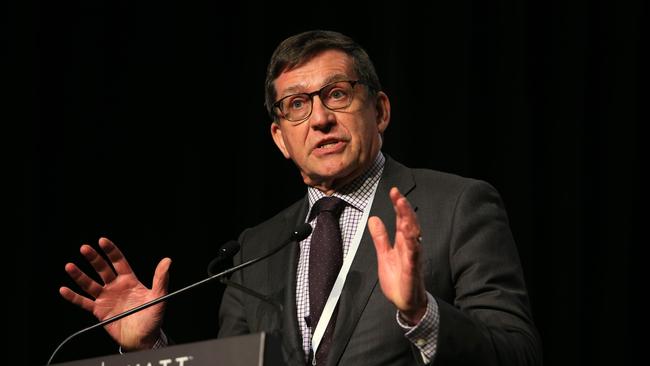Australia economy beating all expectations, RBA board member says
Australia’s economic recovery is running ahead of even the most optimistic forecasts, says RBA board member Ian Harper.

Australia’s economic recovery is running ahead of even the most optimistic forecasts, but there’s still a very long road ahead before a rise in interest rates will be called for, Ian Harper, a board member of the Reserve Bank of Australia, told The Wall Street Journal.
“No serious forecaster was saying the recovery was going to be flat bottomed. Everybody was predicting a V-shape of some sort, but what is appearing is that it is sharper than even the most optimistic forecasts, and that’s clearly to be welcomed,” said Mr Harper, who wasn’t speaking on behalf of the RBA.
The Australian economy is on track to recapture its output level of late 2019 by the middle of this year, or possibly even earlier, he said.
Still, there’s no need for a major rewriting of the RBA’s forecasts, added Mr Harper, who is also dean of Melbourne Business School.
“We are always revising the outlook. We don’t need to change the tenor of our forecasts because we were always forecasting a recovery. If it’s faster than that, then all to the good,” he said.
Recent economic data has surprised by its strength. Australia’s economy grew at its fastest pace in 60 years in the second half of 2020, and the momentum is expected to have picked up in the first quarter of this year, as success in containing COVID-19 has boosted confidence.
February employment data showed that the number of people in jobs has risen back above 13 million people, 4000 more than in March 2020. Unemployment fell to 5.8 per cent last month from 6.3 per cent in January, with close to 90,000 new jobs added over the month, nearly three times what economists had expected.
In mid-February, the RBA forecast the unemployment rate to still be at 6 per cent per cent at the end of 2021, falling to 5.5 per cent only by end-2022. A new batch of forecasts is due from the central bank in May.
The pace of the recovery has raised questions about the main plank of the RBA’s policy guidance that interest rates will remain at their current record lows for at least another three years.
Mr Harper said that while it is clear unemployment has peaked and is falling quickly, conditions in the job market are still short of anything that would generate strong wage growth and inflation.
Wage growth of 3 per cent to 4 per cent or more is needed to create and keep inflation within the desired 2 per cent -- 3 per cent target band, he said. Current data shows “we are way off” numbers like that, he said.
“You haven’t got a show of producing that until labour markets start tightening up across the board,” he said. And even then there are no guarantees that workers will begin asking for pay increases, while employers will probably remain resistant, he added.
Inflation expectations also need to rise before wage growth starts to creep higher, he said.
“Even assumptions being built into government bond yields lately don’t reflect inflation expectations of 2 per cent - 3 per cent,” Mr Harper said.
Despite the improvement in the job market, full employment is still a long way away.
In a wide-ranging interview, Mr Harper also said there’s no urgency yet to clamp down on strong house-price growth as there is no evidence that lending standards are fraying or that the financial system is at risk.
House prices have begun to surge, helped by record low interest rates and a big jump in household savings. Property research group CoreLogic said house prices jumped by their biggest one-month amount in 17 years in February.
Mr Harper said rising house prices are good for the economic recovery as they support spending growth and confidence.
“What we do want is for household balance sheets to be strong. You don’t want them under water, and you certainly don’t want homeowners to be fire-selling their houses. What happens then is people start spending their money,” he said.
“We are trying to encourage people to spend, and part of that is linked to the wealth effect,” he said.
Wall Street Journal




To join the conversation, please log in. Don't have an account? Register
Join the conversation, you are commenting as Logout